Microscopy Image Competition
2024 Winners announced!
We are excited to announce the results of the 2024 Microscopy Image Competition public vote! After a fantastic response from our community, we have tallied the votes, and the results are in!
Category 1 winner (Featuring Proteintech products): Rachel Stubler
Category 2 winner (Featuring any products): Wen Lu
Thank you to everyone who participated and voted, helping to make this year’s competition a success. We look forward to seeing you again for the 2025 competition!
2024 Finalists
Category 1 - Featuring Proteintech products:
| Aanandita Kothurkar, University College London | Rachel Stubler, Medical University of South Carolina | Man Cheng, UT Southwestern Medical Center |
 |
 |
 |
|
Multiplexed immunofluorescence image of 5dpf transgenic zebrafish retina using IBEX imaging. |
Immunofluorescent staining of the murine small intestine. |
Rat lumbar spinal cord neurons and motor neurons. |
Category 2 - Featuring any products:
| Wen Lu, Northwestern University Feinberg School of Medicine | Lauren Daniele, Thomas Jefferson University | Martin Estermann, National Institute of Environmental Health Sciences (NIEHS) |
 |
 |
 |
|
Drosophila wild-type ovaries (center) and mutant ovaries with impaired microtubule polymerization (periphery). |
Mouse retina. |
Embryonic mouse lung and trachea. |
Competition details
Back for 2024! Proteintech invite you to share your most striking immunofluorescence images for the chance to win a $200 Amazon gift card, a framed print of your image and a CoraLite fluorescent dye-conjugated antibody.
Entries do not have to contain Proteintech products. 2 winners will be chosen via public vote (1 winner with Proteintech products and 1 winner without). Scroll down for full competition rules and terms and conditions.
Public voting for the 2 winners will commence on September 30th until October 13th. The winners will be announced on October 15th.
Prizes
-
$200 Amazon gift card
-
Quality framed print of your image
Finalists will receive a CoraLite fluorescent dye-conjugated antibody. Entries may be showcased on the Proteintech website, email newsletter and social media channels. Submit your entry using the form on the right.
Alongside your image, please include a descriptive figure legend including the following:
-
Catalog number of Proteintech and other vendor antibodies
-
Sample type (e.g. Mouse heart tissue, 4% PFA fixed)
-
If multiplexing, please provide a clear description of each colour e.g. Red – vimentin, green – GFAP, blue – DAPI
-
Please state if specialist imaging techniques were used e.g. STORM or STED
-
Objective used and scale bar (optional)
Judging process
6 finalists (3 images using Proteintech products and 3 images using any products) will be chosen by a panel of Proteintech scientists. Finalists will be selected on the overall aesthetics of the image, technical difficulty in obtaining the image, research relevance, originality and suitability for the competition. The overall winner will be determined by a public vote.
Finalist announcement: September 27th 2024
Voting process
On September 9th 2024 the entry form on this page will be replaced by a voting form. Only 1 vote per day, per person will be counted. The overall winner will be the entry which receives the most public votes.
Public voting period: September 30th- October 13th 2024
Winner announcement: October 15th 2024
2023 Winners
Jeong Hun Jo - Washington University in St. Louis
Projected wild type female mouse islet images labeled with cilia and basal body markers. Using Proteintech antibodies (green: acetylated alpha-tubulin for cilia (66200-1-lg), red: FOP for basal bodies, (11343-1-AP) and DAPI
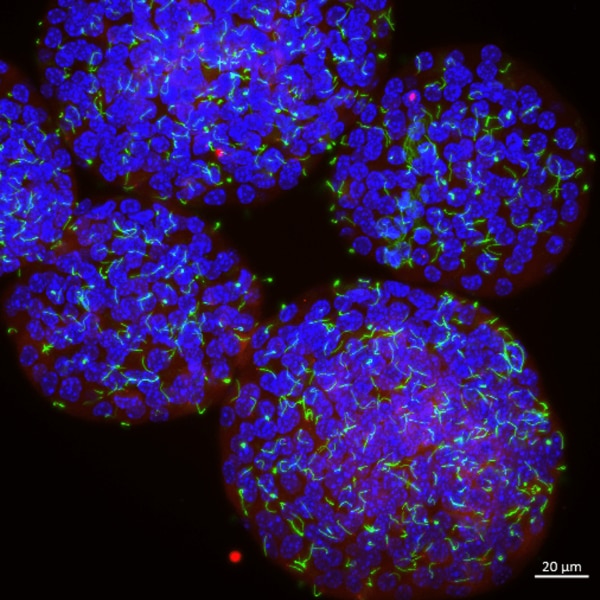
Pinky Kain - University of Pennsylvania
Drosophila have hair like structures called sensillum that house taste neurons (green- leaf like shape) present on the fly labellum (mouth) and send taste information to brain (red) through axons to a specialized structure called sub-esophageal zone (SEZ, heart shaped structure).
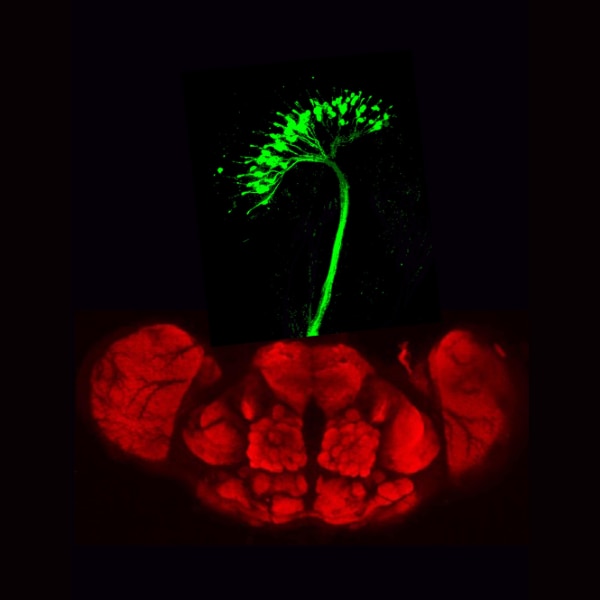
2023 Finalists. Click to enlarge images
|
Clarisse Brunet Institut Curie Lumen of a human cerebral organoid. Progenitor cells are labeled in yellow Using Proteintech HOPX (11419-1-AP). Nuclei in cyan (DAPI). Tissue was fixed with 4% PFA. |
T. Rücker Uni Hamburg-Eppendorf Immunostained Mouse E18 prefrontal cortex, transfected with tDimer2, stained against Satb2 (in magenta/anti-647, (21307-1-AP) and donkey anti-rabbit 647. |
Adam Soos Semmelweis University 18HH chicken embryo, 4% PFA fixed. Sox10 antibody (red) labels the migrating neural crest cells. Cell nuclei were stained with 4,6 diamidino-phenylindole (DAPI) for 15 min. |
K. Mempel University of California San Diego Antibodies used:AF647 E-Cadherin (CD324), AF594 CD45.1, FITC CD8aSample: Mouse Small Intestine fixed with AcetoneCYAN: E-Cadherin, GREEN: CD45.1, RED: CD8a |
 |
 |
 |
 |
Honourable Entries

CoraLite fluorescent dye-conjugated antibodiesProteintech's CoraLite antibodies are directly conjugated with fluorescent dyes: CoraLite488, CoraLite594 and CoraLite647. They offer bright and long lasting fluorescence and act as perfect tools for immunofluorescence studies requiring multiplex co-labeling studies without the need for secondary antibodies. |
||
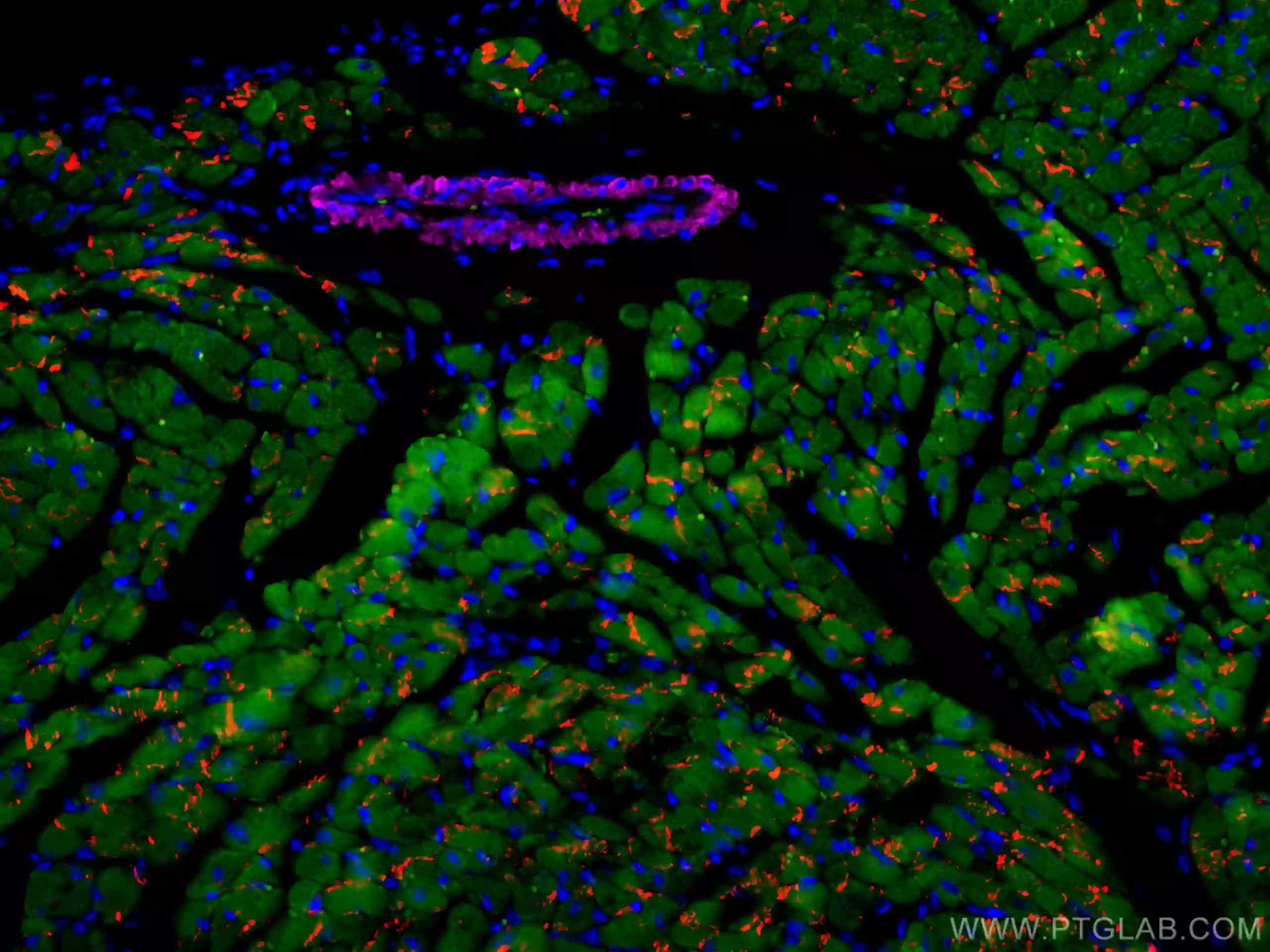 |
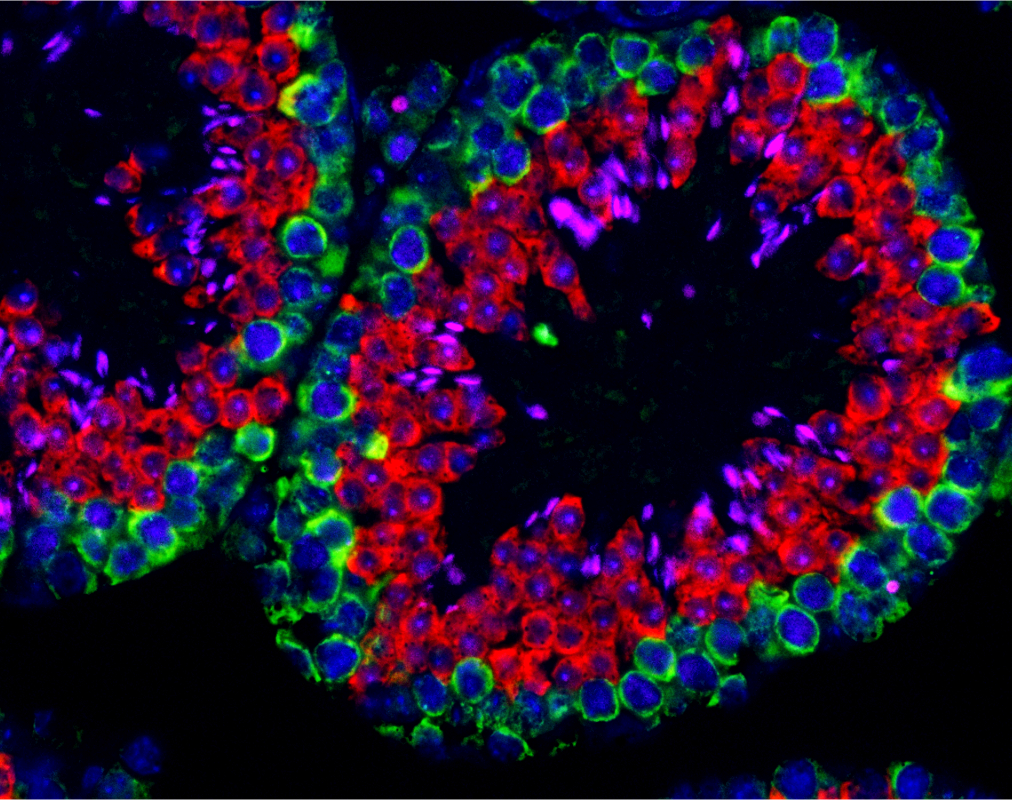 |
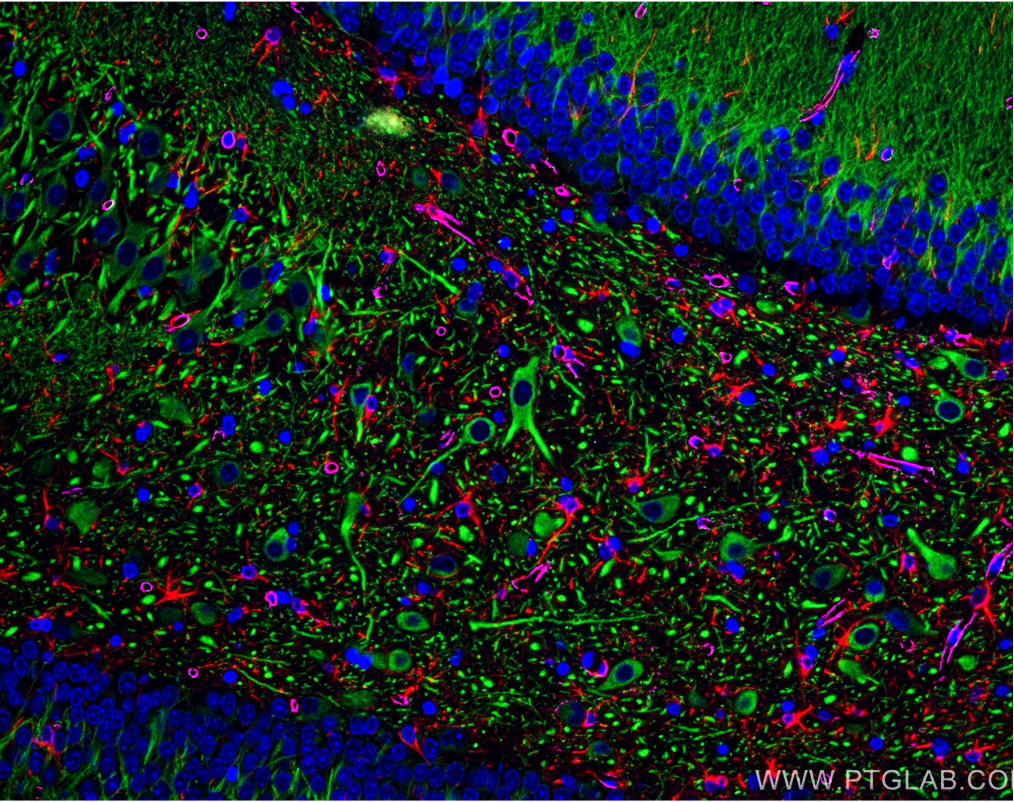 |
|
Antibodies: CL488-66376 (Troponin I), CL594-22018 (N Cadherin), CL647-67735 (Smooth muscle actin). Mouse heart. Expression of troponin I(green) in Cardiac muscle, N cadherin (red) in Intercalated discs and Smooth muscle actin (pink) in Smooth muscle cells of cardiac vasculature. |
Antibodies: CL488-12633 (DAZL), CL594-13720 (BOULE) and CL647-17178 (TNP1). Mouse Testis. Expression of DAZL (green) in spermatogonia cells, BOULE (red) in spermatocytes and TNP1 (pink) in spermatids. This image show differential protein expression during spermatogenesis. |
Antibodies: CL488-17490 (MAP2), CL594-16825 (GFAP), and CL647-16473 (AQP4). Mouse brain. Expression of MAP2 (green) in neurons, GFAP (red)in Astrocytes and AQP4 (pink) in astroglialendfeets.
|
ChromoTek Nano-secondariesNano-Secondaries® are the next level of secondary antibodies. They enable cleaner images with higher resolution. They consist of VHHs, also named Nanobodies, conjugated to Alexa Fluor® dyes. Nano-Secondaries have high affinities and bind to primary antibodies in a subclass and species-specific manner. |
||
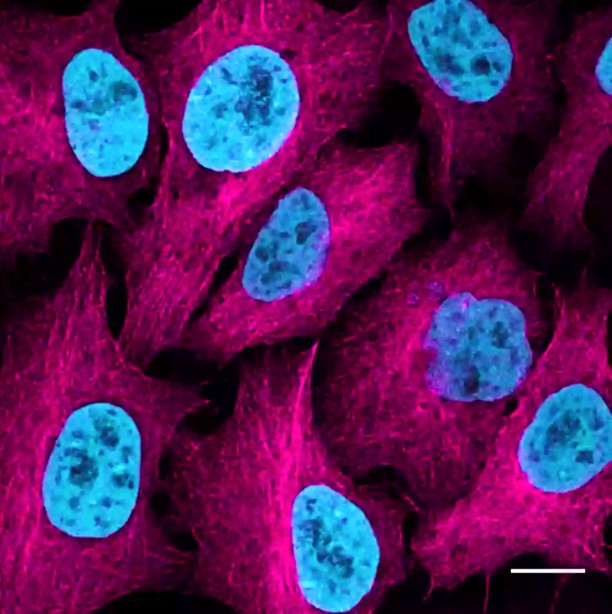 |
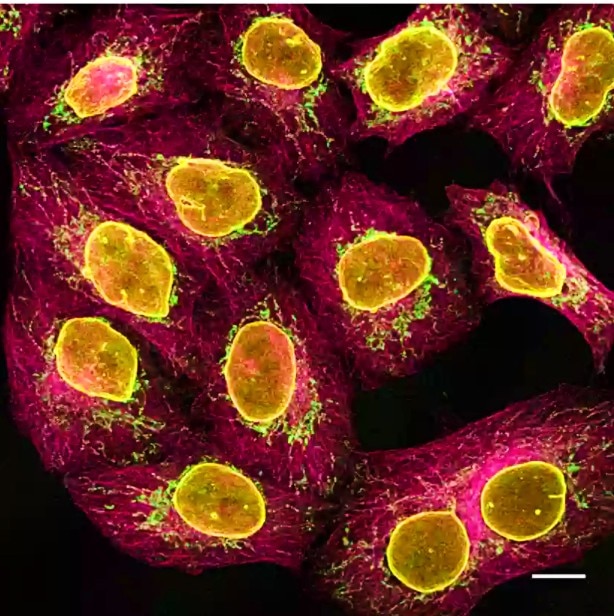 |
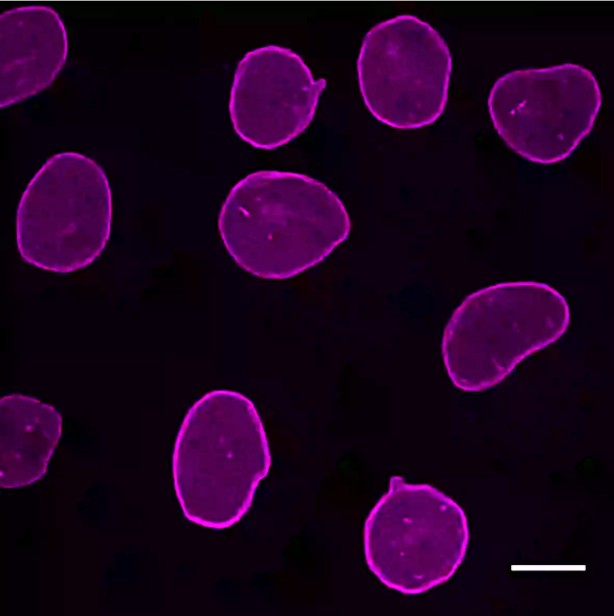 |
|
HeLa cells stably expressing Tubulin-GFP at near-endogenous level were immunostained with rabbit anti-GFP PABG1 antibody and alpaca anti-rabbit IgG VHH Alexa Fluor® 647 (magenta). Nuclei were detected with H2B-RFP and RFP-Booster Atto594 (cyan). Scale bar, 10 μm. |
The anti-mouse IgG2b Nano-Secondary is subclass-specific and does not cross-react with IgGs from other commonly used species (here rabbit) and with mouse IgG1 and IgG3 subclasses. |
HeLa cells were immunostained with mouse IgG3 anti-Lamin A/C antibody + alpaca anti-mouse IgG3 VHH Alexa Fluor® 647 (magenta). Scale bar, 10 μm. |
-
Each entry must be the original work of the person entering the competition and their entry must not contain any material that infringes anyone else’s copyright.
-
Entries do not have to contain Proteintech products. 2 winners will be chosen via public vote. 1 winner with Proteintech products and 1 winner without.
-
Images must be submitted using the online form on this page.
-
Maximum of 2 entries per person.
-
The competition opens for entry submissions on August 1st 2024. Entries close on September 13th
-
The image file format for entries submitted via the online form must be .jpeg or .png. The image should be high resolution no greater than 4MB in size.
-
The entrant accepts entries will be used for marketing purposes on Proteintech email, social media and website. The entrant's name, University/Institution and a brief image description will be used.
-
Each finalist will receive 1x CoraLite antibody.
-
On October 15th 2 winners will be announced. The winners will receive an Amazon voucher of the value (£200) or ($200) or 200EUR), framed print of their image and a free Coralite antibody.
-
Prizes are non transferable, exchangeable or redeemable for cash.
-
Images should not be part of published work, unless the publication in question is deemed “open access” by the journal. By submitting this image you are agreeing that you have permission from all authors and funders to share this work publicly.
-
Proteintech reserves the right to change the prize without notice.
-
Entries will be honestly judged on the overall aesthetics of the image, technical difficulty in obtaining the image, research relevance, originality and suitability for the competition.
-
Proteintech reserve the right to cancel this competition at any stage.
-
The winners will be determined by a public vote.
-
Winners will be announced via our social media , email and website.
-
Entrants will be deemed to have understood the competition rules and accepted them and agree to be bound to them when entering the competition.
-
6 finalists (3 images using Proteintech products and 3 images using any products) will be chosen by a panel of Proteintech scientists.
-
Proteintech reserves the right to disqualify any entrant for submitting an entry, which is not in accordance with these Terms and Conditions